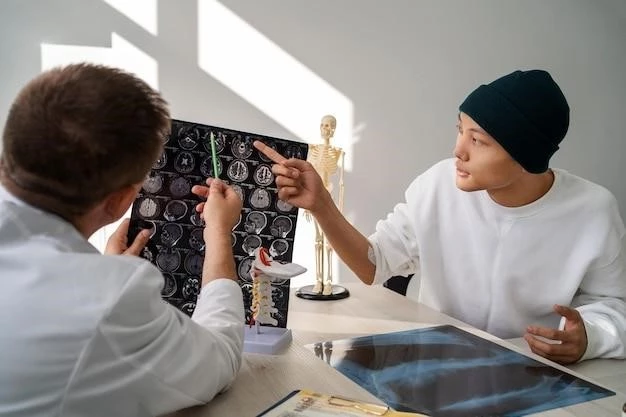Definition and Overview
Craniometaphyseal Dysplasia Recessive Type is a rare genetic disorder characterized by abnormal bone growth in the skull and metaphyses of long bones. This condition can lead to facial deformities and various health complications.
Incidence and Prevalence
Craniometaphyseal Dysplasia Recessive Type is an extremely rare condition with a few documented cases worldwide. Due to its rarity, the exact incidence and prevalence of this disorder are not well-documented.
Clinical Features
Individuals with Craniometaphyseal Dysplasia Recessive Type may experience skull enlargement, facial deformities, hearing loss, breathing difficulties, and susceptibility to recurrent infections due to bone overgrowth and narrowing of airways.

Symptoms of Craniometaphyseal Dysplasia Recessive Type
Physical Symptoms
Physical symptoms of Craniometaphyseal Dysplasia Recessive Type include facial asymmetry, wide-set eyes, dental abnormalities, stunted growth, and broadening of the bones. These symptoms can vary in severity among affected individuals.
Health-related Symptoms
Health-related symptoms of Craniometaphyseal Dysplasia Recessive Type can include recurrent sinus infections, hearing loss, vision problems due to optic nerve compression, and difficulties with breathing and swallowing as a result of bone overgrowth in the skull and airways.
Treatment Options for Craniometaphyseal Dysplasia Recessive Type
Medical Interventions
Medical interventions for Craniometaphyseal Dysplasia Recessive Type may include bisphosphonate therapy to manage bone density, surgical procedures to relieve bone constriction around vital structures, hearing aids for hearing loss, and regular monitoring for potential complications.
Surgical Procedures
Surgical procedures for Craniometaphyseal Dysplasia Recessive Type may involve skull reshaping surgery, airway clearance procedures, dental interventions for malocclusion, and decompression surgeries to alleviate pressure on nerves and blood vessels affected by bone overgrowth.
Genetic Causes of Craniometaphyseal Dysplasia Recessive Type
Genetic Mutation
Craniometaphyseal Dysplasia Recessive Type is caused by mutations in the ANKH gene, which leads to abnormal bone formation and remodeling. The specific genetic mutation responsible for this disorder affects bone cells and their development.
Inheritance Pattern
Craniometaphyseal Dysplasia Recessive Type follows an autosomal recessive inheritance pattern, meaning that an affected individual inherits two copies of the mutated ANKH gene, one from each parent. Parents are usually carriers and show no symptoms of the condition.
Prognosis and Complications of Craniometaphyseal Dysplasia Recessive Type
Prognosis
The prognosis of Craniometaphyseal Dysplasia Recessive Type varies depending on the severity of symptoms and the individual’s response to treatment. Early detection and management can improve the quality of life for affected individuals, but complications such as airway obstruction can pose significant challenges.
Complications
Complications of Craniometaphyseal Dysplasia Recessive Type can include respiratory issues due to narrow airways, facial deformities impacting vision and dental health, hearing loss from bone overgrowth affecting inner ear structures, and potential neurological complications from bone compression on nerves. Regular monitoring and prompt intervention are essential to manage these complications.
Research Updates on Craniometaphyseal Dysplasia Recessive Type
Current Studies
Ongoing research on Craniometaphyseal Dysplasia Recessive Type focuses on understanding the underlying genetic mechanisms, developing targeted therapies to regulate bone growth abnormalities, improving surgical techniques for better outcomes, and exploring ways to enhance quality of life for individuals affected by this rare condition.
Potential Breakthroughs
Potential breakthroughs in Craniometaphyseal Dysplasia Recessive Type research include gene therapy approaches to correct the ANKH gene mutation, advancements in precision medicine for personalized treatment strategies, and innovative technologies for early diagnosis and intervention to mitigate the impact of this genetic disorder.
Lifestyle Management for Craniometaphyseal Dysplasia Recessive Type
Dietary Recommendations
Dietary recommendations for Craniometaphyseal Dysplasia Recessive Type focus on maintaining a balanced diet rich in calcium and vitamin D to support bone health. Avoiding foods high in sodium can help manage potential bone complications associated with the condition.
Exercise Guidelines
Exercise guidelines for Craniometaphyseal Dysplasia Recessive Type emphasize low-impact activities like swimming and gentle stretching exercises to promote flexibility and mobility. Regular physical activity can help maintain overall health and support musculoskeletal function in individuals with this condition.
Support Resources for Craniometaphyseal Dysplasia Recessive Type
Patient Support Groups
Joining patient support groups can provide individuals with Craniometaphyseal Dysplasia Recessive Type and their families a platform to connect, share experiences, access valuable resources, and receive emotional support from others facing similar challenges. These groups offer a sense of community and understanding.
Counseling Services
Counseling services can offer emotional support, coping strategies, and guidance to individuals with Craniometaphyseal Dysplasia Recessive Type and their families as they navigate the challenges associated with the condition. Professional counselors help address psychological well-being and provide tools to manage stress and anxiety effectively.
